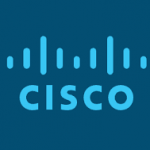
#DigitalCitizen Series: Smart Parking and Lighting Make All the Difference
A Night on the Town
Let there be light…and parking spaces!
There’s nothing like the desperation of circling the city, over and over again, looking for a space to park. You can almost feel your sanity slipping away. The search for a parking space is not only terribly frustrating; it is also a major contributor to traffic congestion and carbon emissions.
And we all know about walking home late at night, tripping every few steps because street lights have failed or not come to life in your neighbourhood.
For city authorities, street lighting is essential to improve public safety and enhance the overall citizen experience. It also influences a city’s ability to create a lasting environment for business and tourism. Unfortunately, street lighting is also a major energy and cost drain.
And, of course in recent times there have been consistent reductions in council budgets. These must be managed, while still meeting the growing demands from citizens.
However, cities around the world are managing to overcome these challenges with the help of the Internet of Everything. In particular, cities are developing digital strategies that better address parking and city lighting needs, yielding widespread and shared benefits.
For example, with easier access to parking, citizens are facing less traffic, saving money on fuel, receiving more convenient payment options, and experiencing an overall improvement in the quality of life. On the flip side, civil servants can better detect and report parking violations, increasing council revenue.
Similarly smart lighting management can contribute to safer communities. And city managers can reduce energy consumption, cost, and maintenance, all while positively contributing to the environment.
A Digital Night on the Town
Remember that for this series, our digital citizen is an average community member going about their daily routine. Today’s blog will follow the digital citizen as he has a night on the town.
Our citizen is en route to a restaurant, a nice spot in the city centre. It is a Friday night, he is running a few minutes late, and free parking spaces are very elusive. Not for our digital citizen. Aided by a smart device application, prime parking is found quickly and easily.
Apps such as these have the ability to track empty parking spaces and direct drivers to where they are located. Normally, parking systems and processes have delays and are intended just for reporting on capacity levels. But by using software to do real-time analysis, the results are constantly updated. This allows businesses and communities to direct drivers to empty parking spaces, pulling consumers into economic centres and spurring local business growth.
And in the case of the digital citizen, use of the app directed him to a parking space just around the corner from the restaurant. Our citizen is on time, the night is saved, and all is well. On average, this digital shortcut saved our citizen anywhere between 20 to 45 minutes while searching for a parking spot.
Smart parking initiatives are showing immense promise for reducing traffic congestion, noise problems, and issues of air quality. Santander, Spain is experiencing an 80 percent reduction in downtown traffic congestion, reducing travel times and environmental pollution. And in Barcelona, smart parking technology is increasing city revenue by millions of dollars and helping to create thousands of new jobs.
Dinner is now over, and our digital citizen and his companion want to take a walk through the streets of the old city.
City streets at night can often be dangerous, viewed as potential places taken over for undesirable activities. Compounding this, a large volume of criminal activity is known to occur under the cover of darkness. Lighting, however, enables lawful users to see each other during hours of darkness and thus provides heightened situational awareness. Acting to enable natural surveillance, some believe proper city lighting during hours of darkness can deter crime up to 20 percent.
Meaning that for the walk through the streets of the old city, smart lighting technology is reducing outages and allowing preventative maintenance measures. It also incorporates cameras, sensors, and Wi-Fi networks to monitor public safety.
From its own smart lighting experience, the city of Oslo is now more connected to its city lighting than ever before. Previously, city officials had to drive to a specific light location in order to see if a light was working. Now, the status of individual lights are visible from an Internet-enabled terminal. This has helped to contribute $1.3 million in electricity savings annually, roughly 20 percent of the cost prior to the new capabilities being added.
But higher efficiency bulbs, and simple control systems that allow for pre-emptive maintenance, just scratch the surface of the potential offered by modern city lighting systems. Cities like Amsterdam are paving the way and taking advantage of the Internet of Everything.
Next Stop
Stay tuned for next week’s post to discover more information about the importance of securing the Internet of Everything through the lens of mass transit. And be sure to check back each week as we explore new themes, challenges and observations.
Additionally, you can click here and register now to get your IoE questions answered on how to become the next digital community.
Finally, we invite you to be a part of the conversation by using the hashtag #DigitalCitizen and by following @CiscoGovt on Twitter.
For more information and additional examples, visit our Smart+Connected Communities page and our Government page on Cisco.com.
Tags:- #DigitalTransformation
- #SmartConnectedCity
- Government
- Internet of Things (IoT)
- public sector
- smart cities
- Smart+Connected Communities



